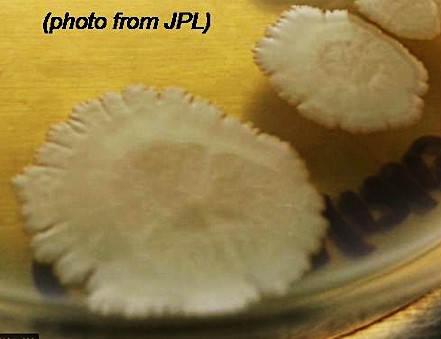Streaking Analysis of Bacteria Sampled from Podiatry Patients
Łubkowska Beata, Stodolna Aleksandra and Skowron M Piotr
Department of Molecular Biotechnology, University of Gdansk, Poland
The High School of Health in Gdansk, Pelplinska 7, Poland
BioVentures Institute Foundation, Gdańsk, Poland
Received Date: 29/09/2021; Published Date: 03/11/2021
*Corresponding author: Łubkowska Beata, Department of Molecular Biotechnology, Faculty of Chemistry, University of Gdansk, Wita Stwosza, The High School of Health in Gdansk, Pelplinska 63, 80-308, Gdansk, Poland. Email: beata.lubkowska@wsz.pl
The physiological flora of the skin is a complex ecosystem, that has been divided into transitional and normal microbiome. The correct microbiome of the skin guarantees its health and nice appearance, that is why it is not worth getting rid of the microorganisms through excessive cosmetology treatments or by using agressive skin care products. It is thanks to the normal microbiome of the skin, that people are not so susceptible to various infections. Skin is very diverse in terms of the microorganisms that live on it. Both the species and quantitative composition depend, among others, on its particular areas, thickness as well as moisture and temperature. In order to answer the question: what kind of microorganisms are present on feet, a research has been carried out.
In order to identify individual bacteria species, samples from podiatry patients were analysed using MALDI TOF MS. Abbreviation MALDI means laser desorption and ionization in the presence of a matrix. This technique uses a small amount of analyte, which is a biopolimer, that is combined with a large amount of α-cyano-4-hydroxycinnamic acid (CCA) or 2,5-Dihydroxy Benzoic acid (DHB), which acts as a matrix. The acid absorbs UV radiation. The resulting compound is subjected to laser radiation, usually at a wavelength of 266 nm and power of 106-107 W/cm2. As a result, positive ions are formed [1,2]. Ion analysis takes place in Time-of-Flight Mass Spectrometer (TOF MS). Based on performed measurements, identification of many species was made and it was found that skin is inhabited mainly by four types of bacteria: Actinobacteria, Firmicutes, Bacteroidetes and Proteobacteria. In areas of increased skin moisture, for example between toes, Corynebacterium and Staphylococcus were predominant.
Particularly noteworthy is the sample, which was identified as Bacillus pumilus using mass spectrometry. The occurrence of this species on the skin of the patient, from whom the sample was collected, is possible through prior contact with soil. There is a low probability of physiological occurrence of this species on human skin. Bacillus pumilus is a spore-forming, rod-shaped, gram-positive and aerobic bacteria. It is found mainly in soil and some of them can colonize in the root zones of some plants, for which B. pumilus has antibacterial and antifungal properties. Additionally, B. pumilus has an important meaning for biochemistry of the ecosystem, because it is able to fix atmospheric nitrogen [3]. B. pumilus infections in people are rare, however, in 2006 it was found that Bacillus pumilus found in rice, was responsible for 3 cases of food poisoning. Isolated strain produced a complex of lipopeptides, called pumilacidins, known to have toxic effect on epithelial cells. Symptoms resulting from the infection included dizziness, headache, chills, back pain, stomach cramps and diarrhea [3].
In another sample collected from a patient, Micrococcus luteus was identified, which is one of the most frequently isolated microorganisms during monitoring of the production environment in pharmaceutical industry companies. This bacterium is a natural physiological flora of the human skin, especially of the head, arms and legs. As a consequence of improper use of aseptic techniques, work clothes and poor management of spaces like clean-room, frequent contamination with this microorganism occurs [4]. Micrococcus luteus is a harmless saprophyte, however it can become an opportunistic pathogen causing e.g. meningitis, arthritis, endocarditis and chronic skin infections in HIV patients [4].
Identification of the species in another sample revealed the presence of Staphylococcus aureus. Some bacteria of the genus Staphylococcus are a part of physiological human microbiome. However when staphylococcal infection occurs, its course is sometimes severe, and the treatment can be very difficult due to antibiotic resistance of the bacteria. The balance of the skin microbiome is crucial in the treatment of sensitive and allergic skin. Numerous and not fully understood interactions between commensals, e.g. Staphylococcus epidermidis and pathogenic bacteria, including Staphylococcus aureus, and their participation in activation of the primary and acquired immune response shed new light on pathogenesis of Atopic Dermatitis (AD). In this disease, skin colonization by Staphylococcus aureus is often observed and it is considered as a factor capable of provoking exacerbation of lesions [5].



Staphylococcus aureus
When examining the feet of the patients who participated in the study, normal or slightly abnormal condition of the feet was found. There were no inflammations, degenerative changes or pathologies in the skin and nails of the feet. The flora consisted of both bacteria and fungi, the presence of which in right proportions is a desired occurrence. The most common bacteria colonizing the skin of the feet among the studied patients was Micrococcus luteus. On the skin there may also be a transitional flora, that is not physiological for the human organism. In this area a pathogenic bacteria has been identified – Staphylococcus aureus. As a result of the mass spectrometry technique, the presence of soil bacteria (Bacillus pumilus) was revealed, which were probably transferred to the patient’s feet from the soil. The occurrence of transfer of bacteria from soil to feet was discovered, proving how easily microorganisms are able to penetrate the human epidermis.
References
- Fredericks D, Feazel L, Bessesen M, Prince C. The human Nasac microbiota and Staphylococcus aureus carriage”.
- Gao Z, Tseng C, Pei Z, Blaser M. Mollecular analysis of human forearm superficial skin bacterial biota” Proc. Nat. Acad. Sci. USA. 104, 2927-2393, 2007
- Leyden J, Mc Ginley K, Nordstorm K, Webster G. Skin microbiota” J. Invest. Dermatol. 1987; 88: 65-72.
- Holland K, Bojar R. Cosmetics, what is their influence on the skin microflora?” Am. J. Clin. Dermatol. 2002; 3: 445-449.
- https://pharmaceris.com/porady/a/znaczenie-mikrobiomu-w-funkcjonowaniu-skory.

